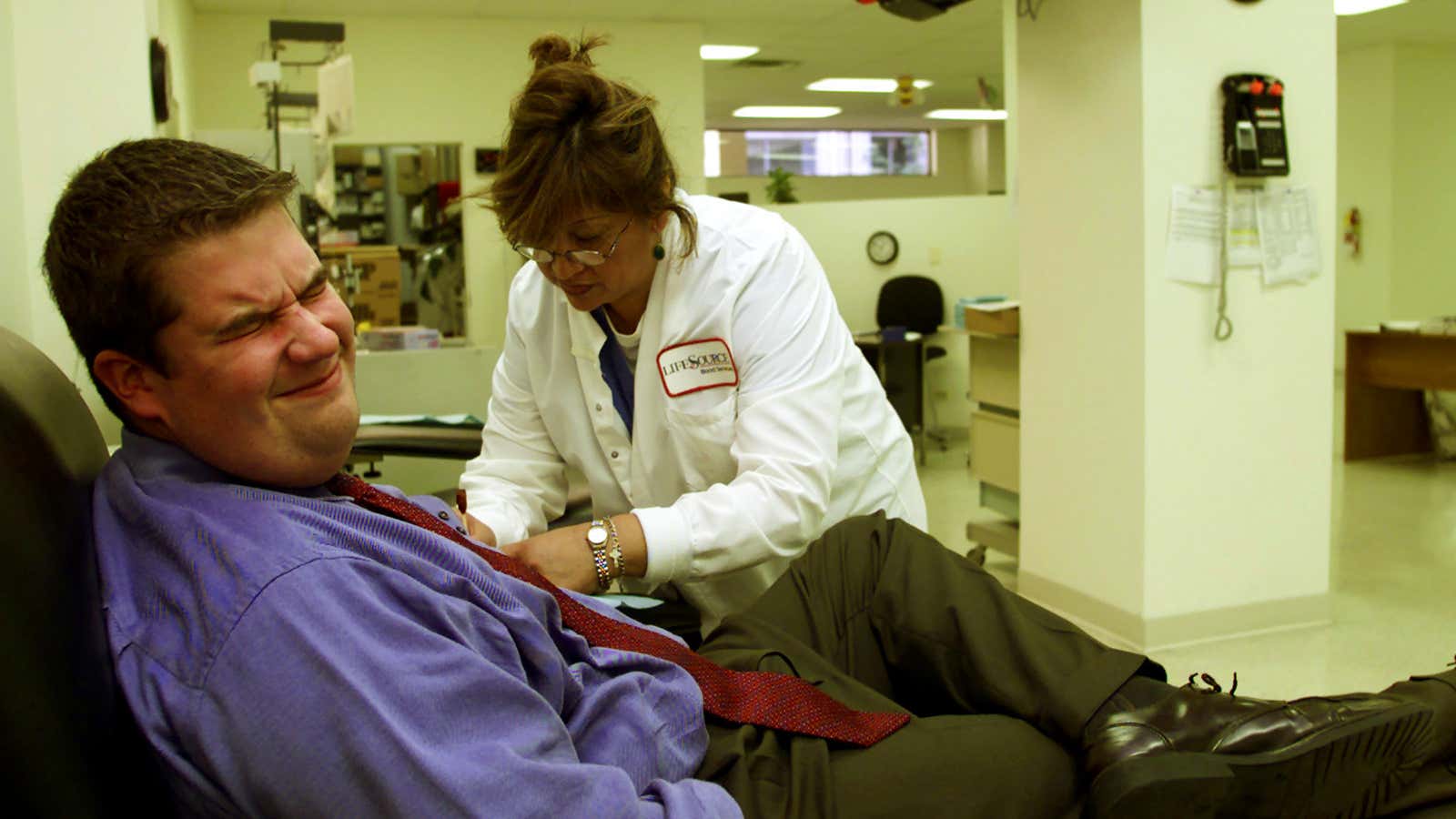There’s a new occupation on the rise in America, and it’s phlebotomy—the art of drawing blood.
Phlebotomists are medical technicians who handle transfusions, tests and donations. The job was added this year for the first time to the US Department of Labor’s occupational handbook—a tome that gives detailed profiles of hundreds of jobs that make up 84% of the economy—and in the next decade 27,000 new workers are forecast to enter the trade.
That’s a small total number, true, but an above-average growth rate. It reflects a much broader trend in medical specialization: The 10 occupations that will create the most new jobs between 2012 and 2022 include personal care aides, registered nurses, home health aides, and nursing assistants; health-care workers will make up one-third of all new employment in that time period.
This reflects both the growing demand for health care in an aging US population and the desire to cut costs by increasing efficiency. Doctors (who in their various specialties account for every one of the 10 professions with the highest median pay) can focus on diagnosis and treatment while less-skilled specialists handle more routine work. Not that there aren’t costs: Already, older physicians are complaining that their younger colleagues don’t know how to put in an intravenous line.
But what about the quality of these new jobs? That’s where things get really bloody: Of the top 10 job-creating occupations, only one—registered nurses—offers a median wage that is more than the current US median income of $51,000 a year. Only four pay enough to support a four-person household above the 2013 poverty line of $23,550—so the two-income household is here to stay. All those people rushing into phlebotomy can expect a median wage of only $29,730 (so be extra nice to the person who draws your blood). And the largest forecast source of new jobs, some 580,000 personal care aides, will receive a median salary of just $19,910 a year. That’s why president Barack Obama’s move to grant them minimum wage and overtime pay was an important, if under-appreciated, act of economic policy.
What about the economy of the future? It’s coming along, sort of. High-tech jobs in software development will be growing, adding at least 369,000 new jobs in the next decade—but that’s still less than the 421,900 new restaurant workers the US will need.
